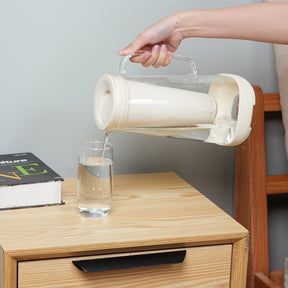Understanding Filtration Process
As we dive into the world of it, it's important to understand the basics water pitcher.Water pitchers are designed to remove impurities and contaminants from tap water, providing clean and safe drinking water. The filtration process involves the use of activated carbon and ion exchange resin to trap and remove harmful substances such as chlorine, lead, mercury, and other pollutants. The activated carbon attracts and absorbs these impurities, while the ion exchange resin captures heavy metals and other harmful substances, resulting in purified water.

Function of Water Pitchers
Water pitchers work by allowing tap water to pass through the filtration system, which consists of multiple layers of activated carbon and ion exchange resin. As the water flows through these layers, the impurities are trapped, and the purified water is collected in the pitcher. The filtered water is then ready for consumption, free from contaminants and odors, and with improved taste.
Importance of Filtration
The Science Behind Filtration: Understanding How Water Pitchers Work is crucial for ensuring access to clean and safe drinking water. With increasing concerns about water quality and the presence of pollutants in tap water, water pitchers provide an effective and convenient solution for households and individuals to have access to purified water. The filtration process not only removes harmful substances but also enhances the overall quality and taste of the water, promoting better health and well-being.
Choosing the Right Water Pitcher
When selecting a water pitcher, it is essential to consider factors such as the filtration capacity, filter replacement frequency, and the specific contaminants that the pitcher can remove. Some water pitchers are designed to target particular impurities, while others offer more comprehensive filtration. Understanding the filtration capabilities and the quality of the materials used in the pitcher is crucial in making an informed decision to ensure the consistent supply of clean and safe drinking water.





